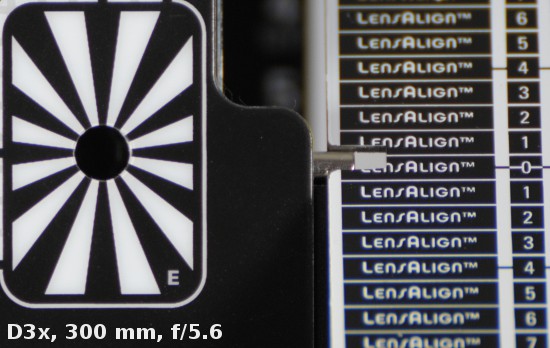Tamron SP 70-300 mm f/4-5.6 Di VC USD
10. Autofocus
When it comes to the speed we don’t have any serious reservations either. At the shortest focal lengths and in the middle of the range the autofocus works very quickly, running through the whole scale in about 0.7 of a second. Near the maximum focal length the mechanism gets slower so running through the scale might take about 1 second. At the maximum focal length the lens has also a tendency to “overshoot” so go to the opposite direction from the right position, bounce off one end and only then set the focus right.
The accuracy of the mechanism we assess very positively. The number of misses in studio conditions was negligible (didn’t exceed 3%). There was also no front or back focus tendencies as you can see in the photos below.
Please Support UsIf you enjoy our reviews and articles, and you want us to continue our work please, support our website by donating through PayPal. The funds are going to be used for paying our editorial team, renting servers, and equipping our testing studio; only that way we will be able to continue providing you interesting content for free. |
- - - - - - - - - - - - - - - - - - - - - - - - - - - - - - - - - - - - - - - - - - - - - - - -
The autofocus situation is very interesting in this category. The Sigma lost ground without putting a fight - they simply didn’t decide to use the HSM mechanism in its lens It is a strange decision and the Tamron profits from it. The Canon 70–300 mm IS features an USM motor but when it comes to its work, well, allow us to bring down the embarrassed curtain on it. Only the Nikkor 70–300 mm VR can be a serious Tamron’s rival (we should forget about the new L series 70-300 mm IS lens because it is not the same price segment after all).
 |
 |






